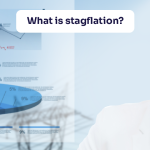There are three data points that intraday traders closely track on stock price charts - open, high and low. When seen together and interpreted appropriately, these can generate important signals.
Here’s how.
Let’s start with the case where the open price (the price at which the 1st trade of the day takes place) and the low price of a stock, are the same. This signifies a sentiment booster and could be treated as a signal that prices may move higher. If, however, the price falls below the open level, this assumption will change.


On the other hand, when the open price and the high price of a stock are the same, one could infer that sentiments are weak and prices tend to fall further from there on. However, if the price rises above the open price, this assumption will change.To illustrate, let’s take a look at the intraday stock price chart of Maruti Suzuki India Ltd. on November 14, 2018. The stock opened at the lowest point of the day, i.e., at Rs 7180.10, and went on to touch an intraday high of Rs 7409. The trend signified that there was a positive sentiment around the stock (for more accurate predictions, one should keep an eye on the buying trends immediately after the open).
To illustrate this case, take a look at the intraday stock price chart of Hindalco Industries Ltd., on November 09, 2018. The price opened at Rs 244 and that was the highest price for the day. Later in the day, it touched an intraday low of 237.20 (for more accurate predictions, one should keep an eye on the selling trends immediately after the first trade).



Revisiting the Gold-Silver Ratio Amid Silver's Outperformance
2 min Read Dec 22, 2025
Midcaps: Sweet Spot or Danger Zone? | What HSBC MF’s Cheenu Gupta Thinks | Ventura Spotlight
2 min Read Dec 17, 2025
Understanding Option Pin risk near expiry
2 min Read Dec 12, 2025
EPS in the Stock Market
2 min Read Dec 12, 2025
What is stagflation?
2 min Read Dec 10, 2025
Post your comment
You must be logged in to post a comment.